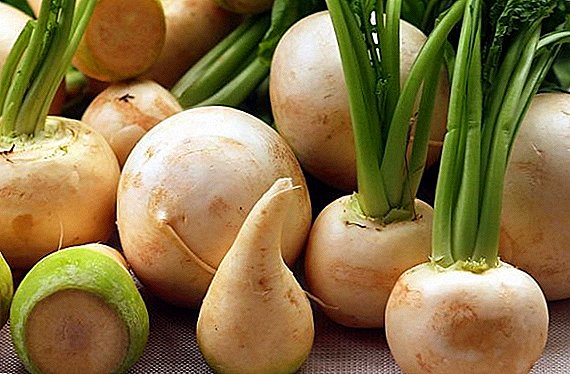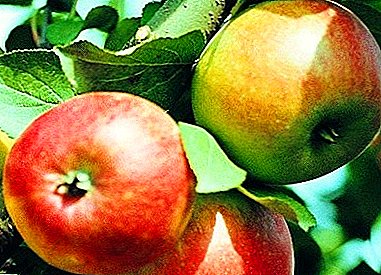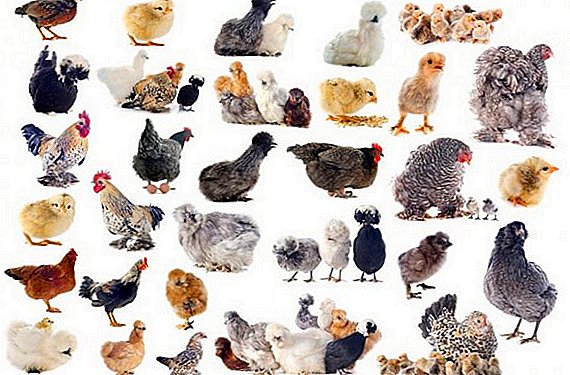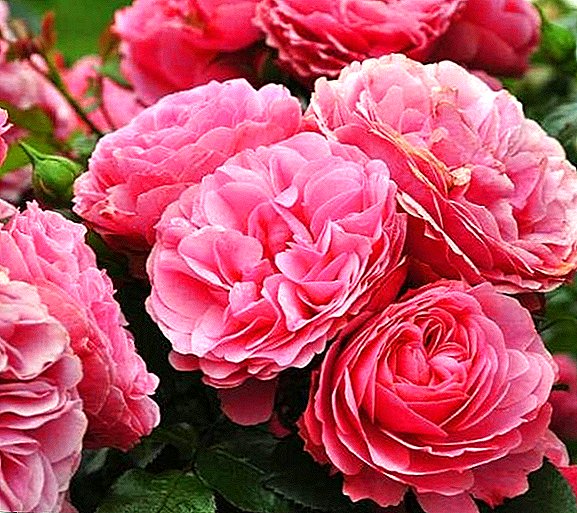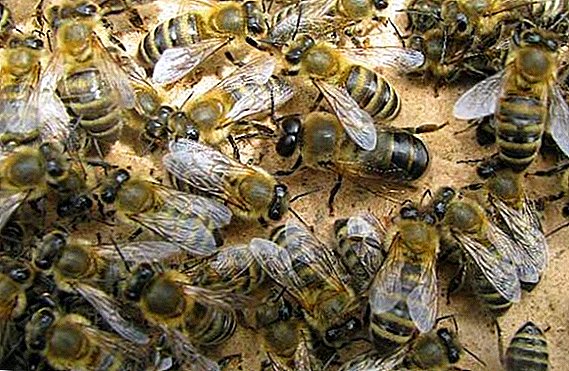 Experienced and budding beekeepers tend to deal with bees that show high rates of honey-bearing all year round. This means that you need to choose for breeding industrious breed, good in breeding and resistant to climatic conditions. The breed of karnik bees fully complies with these criteria, so we will further discuss their characteristics and features.
Experienced and budding beekeepers tend to deal with bees that show high rates of honey-bearing all year round. This means that you need to choose for breeding industrious breed, good in breeding and resistant to climatic conditions. The breed of karnik bees fully complies with these criteria, so we will further discuss their characteristics and features.
Description and photo
Beekeepers distinguish four natural breeds or races of honey bees. Karnik is one of them. It appeared in the Austrian county of Krajna in the nineteenth century, now it is the territory of Slovenia.
During this time, the breed has spread throughout the world, through selection many of its strains have been derived. The formation of race was influenced by the Italian and Cypriot bees.
Despite this, the main advantage of the karnik - exceptional calm - remained unchanged. Beekeepers say that the uterus is worm even when they hold the frame with it in their hands.  The bee is medium in size, gray in color, its mass ranges from 100 to 230 milligrams. In a day the uterus can lay up to two thousand eggs, which indicates a good fecundity of the species.
The bee is medium in size, gray in color, its mass ranges from 100 to 230 milligrams. In a day the uterus can lay up to two thousand eggs, which indicates a good fecundity of the species.
Bees collect honey when the first flowers appear, finish work at the end of the summer and work in any weather. Hence, the indicators of good honey content, which average up to sixty kilograms per family.
In describing the breed of the karnik bee, it should be noted that it tolerates climate change well and winters well, spending very little food. During the winter, the family eats her no more than six kilograms. The insect is resistant to disease and after wintering in the hive there is little submission.
Breed characteristics
Beekeepers have bred and kept this breed for centuries. These are very friendly bees that collect a lot of honey and do not get sick. However, each bee breed has pros and cons. Let's find them out at Karnik as well, having become closer acquainted with the race.
Learn all the secrets of onboard beekeeping.
Appearance
Karnik refers to the gray bee, the main color of her body is dark gray. Sometimes on the first tergites there are yellow stripes. This happened due to cross-breeding of the karnik with the Italian bee.
The insect pubescence is short, thick and silvery. Uterus, as a rule, is black, but sometimes striped. This breed is characterized by a longer than the rest, proboscis, which grows up to seven millimeters.  Thanks to this, an individual can collect nectar even in the most hard-to-reach places. The working bee weighs a little over one hundred milligrams, the uterus is about two hundred, and the drone weighs two hundred and thirty. The size of the bee refers to the average species.
Thanks to this, an individual can collect nectar even in the most hard-to-reach places. The working bee weighs a little over one hundred milligrams, the uterus is about two hundred, and the drone weighs two hundred and thirty. The size of the bee refers to the average species.
Productivity
Some beekeepers note high royalness karnik; others, on the contrary, claim that it does not exist. Different reviews were observed in different habitats of this breed.
You will probably be interested to know why, when and how bees swarm.So, in Serbia, the efficiency was very high, and in Romania, Transcarpathia and Australia it was not noted at all. Therefore, it can be said that the robility of a race depends on the conditions in which it is located and on its enormous genetic diversity.
At the same time, experts say that even if signs of swarming are available, it is fairly easy to stop. To do this, you just need to put additional frames in the hive in order to provide the bees with work.
Did you know? During the day, a bee can fly around twelve hectares of land, collecting nectar.

Genetic imbalance
Karnik bees are genetically unstable. If an alien drone enters the hive, all the offspring lose all good qualities without moving to a new species. Only the dominant quality can remain, and this is primarily the calm of the breed.
Therefore, experts recommend crossbreeding only within a single subspecies.
Progeny development
The offspring of the karnik breed begins to develop with the appearance of the first pollen and matures much earlier than in other species. Therefore, by mid-May the strength of the swarm is finally growing.
A bee per day lays an average of two thousand eggs and this process continues until there is pollen. After that, the family ceases to grow and thus its number can be regulated. The family winters with a small composition, and therefore consumes less food.
Important! Experts say that if the uterus of the Krajina bee is contained along with the Italian variety of drones, this will significantly increase the swarm strength and the amount of honey.

Change of queens
For bees of karnik, a quiet change of bee-maids is characteristic, while they form no more than two queen cells. Therefore, the family appreciates the queen. All this happens in a natural way, without disturbing the life of the hive.
Features
A longer proboscis in this bee breed allows you to collect nectar on a variety of honey plants, even with a small sugar content. They work well both in large areas and in small bribes.
The family copes with the collection of honey from red clover. Due to the early and rapid development of offspring, these insects work well even on early honey plants.
The genetic feature of the Karnik breed is that it is formed in a mountainous climate, so cold weather is not terrible for it.
After completion of the main bribe in the summer, the uterus ceases to worm. This is because the family begins early to prepare for winter and limits the delivery of nectar and pollen.
One of the features of the karnik bee is the lack of response to external stimuli. This is great for a beekeeper who doesn't need smoke and protection, especially in large apiaries. 
Did you know? The average bee family totals fifty thousand individuals.
Advantages and disadvantages
Krajina bee is different from itself similar absolute tranquility and lack of irritability. This makes it popular for content in all apiaries.
It does not require large expenditures in terms of feed, consuming it during the wintering period a very small amount. Diligence is inherent in it genetically, it is well tolerated by changes in the weather and therefore the yield of honey in the apiary is very high.
Beekeepers note that after the appearance of bees of this breed in the apiary, the honey harvest grows by almost thirty percent.
Also, unlike other bee species, the karnik tolerates transportation very well. During the move, the temperature in the hive rises and almost all bee species tolerate this badly. Krajina bee in this regard is an exception, individuals behave very calmly.
Read also about the different types of hives: Dadana, Alpine, Varre, multicase, "Boa", nucleus, pavilion.Insects are distinguished by high fecundity, since the uterus lays up to two thousand eggs per day. They quickly grow up, therefore by the time of the greatest flowering the swarm is already strong.
 There is a good orientation of this breed in the field and good coordination. Due to this, the bees do not fly into other people's hives and perfectly protect their own.
There is a good orientation of this breed in the field and good coordination. Due to this, the bees do not fly into other people's hives and perfectly protect their own.Breed is very resistant to various diseases. With proper care and good climatic conditions, the bees do not suffer from acarapidosis, paralysis, padevogo toxicosis.
Of the shortcomings of these bees can be noted swarming. But even with proper beekeeping, it is possible in rare cases. Individuals of this race practically do not produce propolis.
Some consider this a disadvantage, and some, on the contrary, as a deliverance from too frequent hive cleaning. Also, this species does not like a long and harsh winter.
If it is delayed, reproduction may begin late. Because of this, more feed will go away and the swarm will be low.
Important! If the winter is wet and long, be prepared for the fact that there is a possibility of the disease of the Krainsky bee with Nosema. This is rare, but it happens.

Content Features
Karnik breed bees feel great in any territory. But most of all they like to live near clover and rapeseed fields. If heather, buckwheat or sunflower grows close by, professionals recommend other insects.
Bees do not get sick, if you follow the purity of their hives. Despite the fact that the Krainskaya bee practically does not produce propolis, it still forms on the frames and walls of the bee house and needs to be removed.
The frequency of placement of hives on the ground can be much lower than when caring for other types of bees. Due to the excellent orientation of the terrain, karnik will very easily find their home.
Working bees lay out nectar in two places, including where the bee-field breeds offspring. This may interfere with the maturing of the young. To avoid this, it is recommended to pick up beehives with a vertical expansion of the nest for breeding karnik.
Although the bees of this breed are resistant to many diseases, periodically you need to invite a veterinarian to confirm their good health.  If you want to get a lot of honey in the apiary and are not interested in frequent cleaning of beehives, the Krajina bee will fully suit you. This breed is very hardworking, does not get sick and consumes little feed in winter.
If you want to get a lot of honey in the apiary and are not interested in frequent cleaning of beehives, the Krajina bee will fully suit you. This breed is very hardworking, does not get sick and consumes little feed in winter.
And most importantly - you can not be afraid to approach the bee house without protective equipment. Bees are very peaceful and rarely can show aggression.


